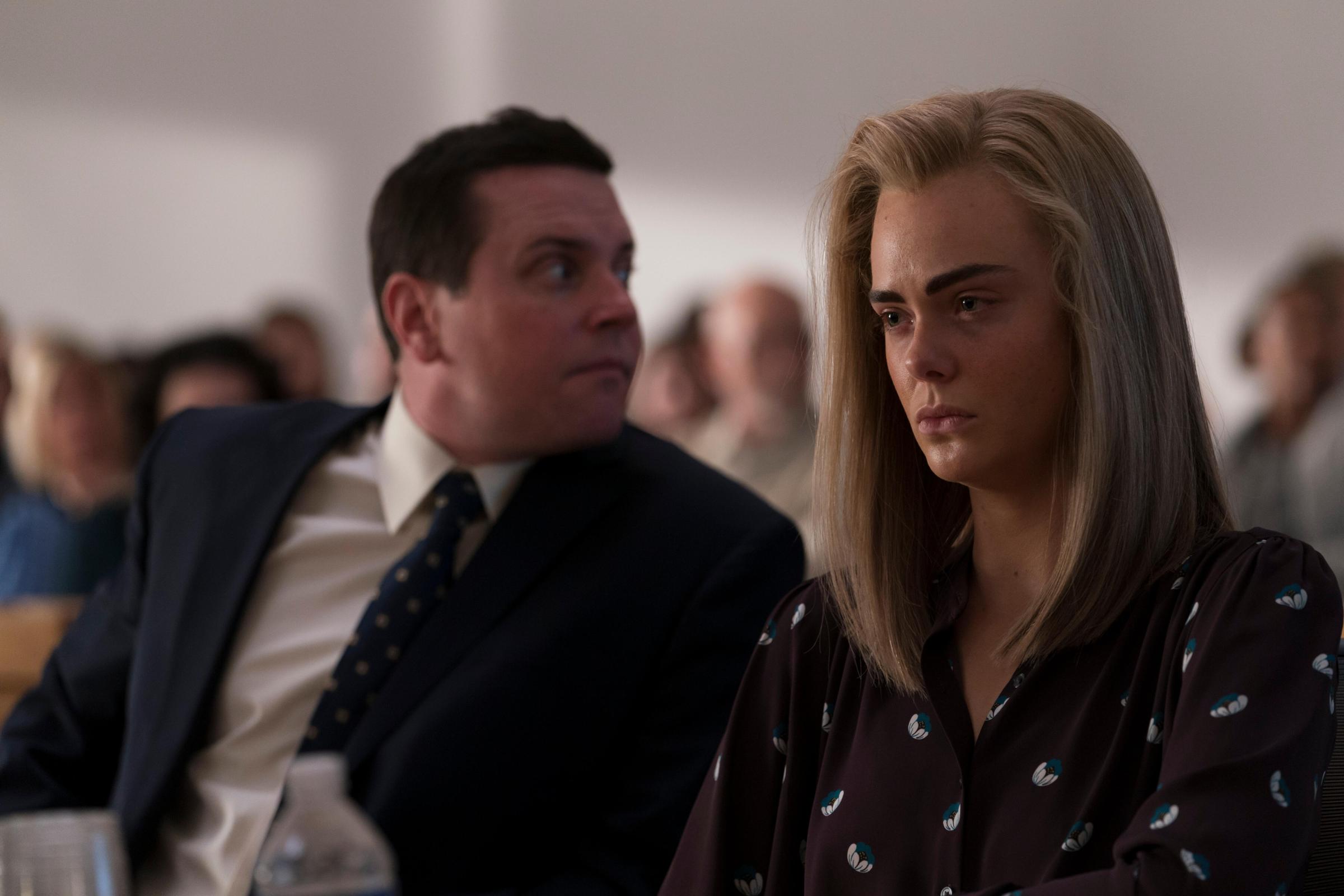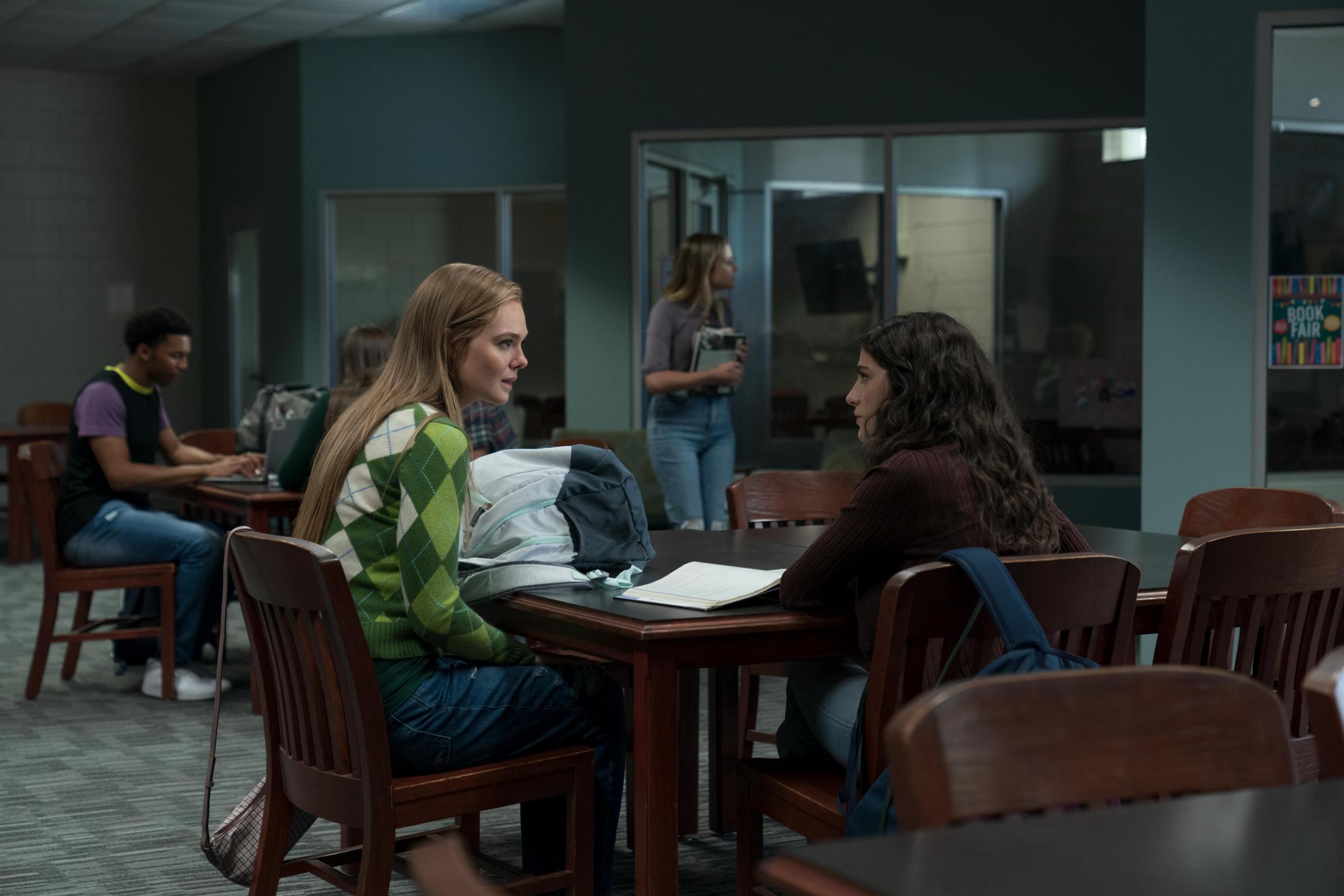Hulu’s limited series The Girl From Plainville opens with two teenagers exchanging a series of text messages that crank up viewers’ anxiety: “You’re the best thing that ever happened to me,” turns to “We should be like Romeo and Juliet at the end,” which turns to “Are you gonna do it now?”
It’s a sequence that condenses what happened in the real lives of Conrad Roy III and Michelle Carter: Roy died by suicide and a judge convicted Carter of involuntary manslaughter for encouraging Roy, through texts and calls, to kill himself. Nicknamed the “texting suicide” case, Roy and Carter’s story drew intense national attention ahead of Carter’s trial in 2017. Today, with renewed interest from the show, the case remains at the center of legal controversy over who can be held accountable for someone else’s suicide—particularly when it comes to teens and digital communication.
What to know about The Girl From Plainville
The Girl From Plainville dropped its first three episodes on March 29 and is now releasing new installments weekly, as it chronicles the complicated two-year relationship between Carter, then 17, (played by Elle Fanning) and Roy (Colton Ryan), then 18, leading up to his July 2014 suicide by carbon monoxide poisoning. Carter was sentenced to 15 months in prison but was released in January 2020 on good behavior after serving just under 12 months.
The events dramatized in the show are more relevant than ever as suicide rates among younger people climb—it’s now the third-leading cause of death for youth and young adults. In a February 2022 report, the U.S. Centers for Disease Control and Prevention (CDC) and the National Center for Health Statistics, found that rates among 10-24 year olds in the U.S. have increased over 50% since 2001.
Also more relevant than ever, questions about the intersection of technology, free speech, and mental health, and whether Carter’s punishment fit the crime.
Here’s what to know about how the events depicted in the docudrama have impacted both our legal system and society at large.
What are the legal implications, especially for virtual relationships, of Michelle Carter’s case?

The case depicted in The Girl from Plainville broke new ground on how digital communications can be used in a criminal trial. During Carter and Roy’s largely virtual relationship, which started in 2012, Carter sent Roy texts in which she urged him to follow through on plans to kill himself, culminating in a phone call where she told him to get back into a truck filled with exhaust fumes.
Mary Anne Franks, a professor at the University of Miami School of Law and president of the Cyber Civil Rights Initiative, says that while Carter’s actions were “unethical,” her conviction was surprising from a legal standpoint. “The idea that you could be charged with manslaughter for someone else’s intentional decision to kill themself is really strange on its face,” she says. “Suicide is typically not thought of as something you can directly contribute to unless you’re handing someone a physical implement.”
While prosecutors placed significant emphasis on the text messages that Carter and Roy exchanged, Massachusetts didn’t have a law against encouraging suicide—through any means, including digital communication—at the time of Carter’s trial. This created controversy over the fact that Carter was found guilty of manslaughter, a charge generally involving reckless behavior that directly causes another person’s death, such as drunk driving. Instead, Franks says, the court was “shoehorning existing law to try to fit what Carter did” due to societal outrage.
Franks says it’s also notable that while Carter’s story has become known as the “texting suicide” case, Juvenile Court Judge Lawrence Moniz ultimately rested his decision on the final phone call between Carter and Roy rather than the texts that preceded it. “Instructing Mr. Roy to get back in the truck constituted wanton and reckless conduct,” Moniz said in his verdict.
Why assigning blame is a legal gray area
Society tends to want a clear-cut explanation for why a person, and particularly a young person, would end their own life. That helps explain the national outrage over Carter’s actions, says Stephanie Fredrick, associate director of the University at Buffalo Alberti Center for Bullying Abuse Prevention. “When it comes to cases involving youth suicide, we tend to want to boil them down to one factor that caused the suicide to take place,” she says. “But it’s usually much more complex than that.”
Carter’s guilty verdict highlighted the legal gray area surrounding the idea that words alone can cause a suicide. Critics of the guilty verdict, including the American Civil Liberties Union of Massachusetts (ACLUM), expressed concern that Carter’s conviction could set a dangerous legal precedent—it could expand criminal culpability to include speech rather than action alone. ACLUM legal director Matthew Segal said in a statement that the verdict “imperils free speech” and could “chill important and worthwhile end-of-life discussions between loved ones.”
Carter’s verdict has already been referenced by prosecutors in the case of Inyoung You, a then-21-year-old Boston College student who encouraged her 22-year-old-boyfriend, Alexander Urtula, to kill himself in 2019. You pleaded guilty to involuntary manslaughter as part of a plea deal that allowed her to avoid jail time.
In the years since Carter’s conviction, Roy’s parents have also been pushing to pass “Conrad’s Law,” a proposed bill that would make suicide coercion punishable by up to five years in prison in Massachusetts.
What does the case mean for how teens communicate digitally?

In real life, as in the series, the troubled teens exchanged thousands of texts and Facebook messages without their parents’ knowledge, and these messages became part of the court case.
To Franks, this deluge of digital communication was a large part of why the case was so controversial and compelling. “There’s a sense that there was panic over a generational divide,” she says. “A lot of the older generation seemed to be particularly alarmed over the idea that texting and technology could be such powerful weapons.”
It also underscores the importance of getting young people to consider the implications of what they say over texts and online—especially as the popularity of digital communication among teens rises. The pandemic had a particularly startling impact on teens’ use of texting and electronic devices: In 2020, Statista reported that texting was the preferred method of virtual communication for over 80% of teens in the U.S., and teens’ use of electronic devices had doubled since the start of the pandemic.
Fredrick says that it’s the responsibility of parents and other trusted adults to talk to young people from an early age about what they say online, and stress that things they say digitally hold just as much weight as things they say to someone’s face. Unlike how we see Carter react in The Girl From Plainville, teens should also know how to appropriately respond if a friend or peer expresses a desire to harm themself or end their own life.
“There’s not as much adult supervision in most of these digital spaces,” Fredrick says. “So we need to be able to say, ‘Here’s what you should do if you have a friend who is experiencing mental health difficulties and is talking about it online.”
More Must-Reads from TIME
- Donald Trump Is TIME's 2024 Person of the Year
- Why We Chose Trump as Person of the Year
- Is Intermittent Fasting Good or Bad for You?
- The 100 Must-Read Books of 2024
- The 20 Best Christmas TV Episodes
- Column: If Optimism Feels Ridiculous Now, Try Hope
- The Future of Climate Action Is Trade Policy
- Merle Bombardieri Is Helping People Make the Baby Decision
Write to Megan McCluskey at megan.mccluskey@time.com